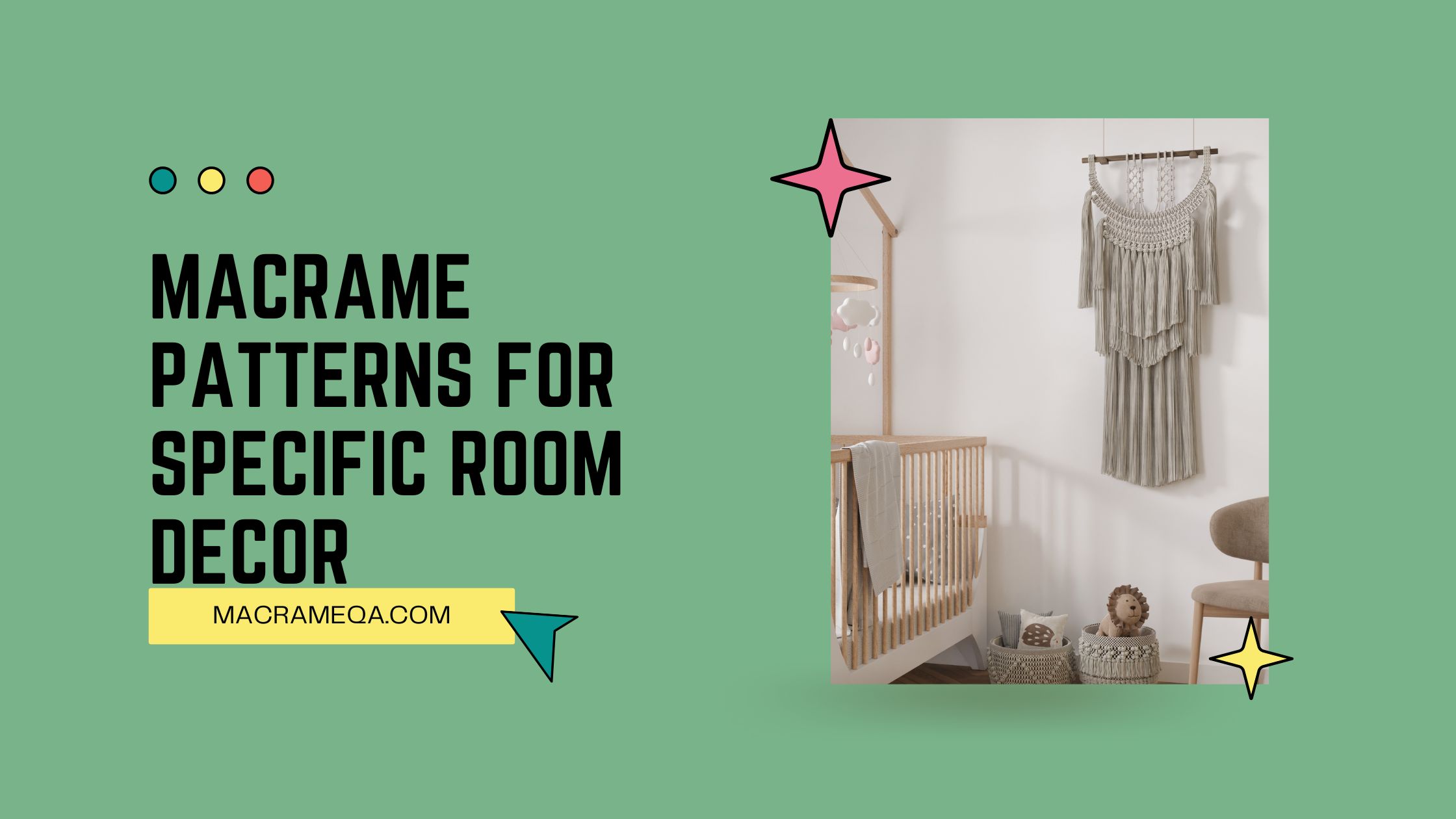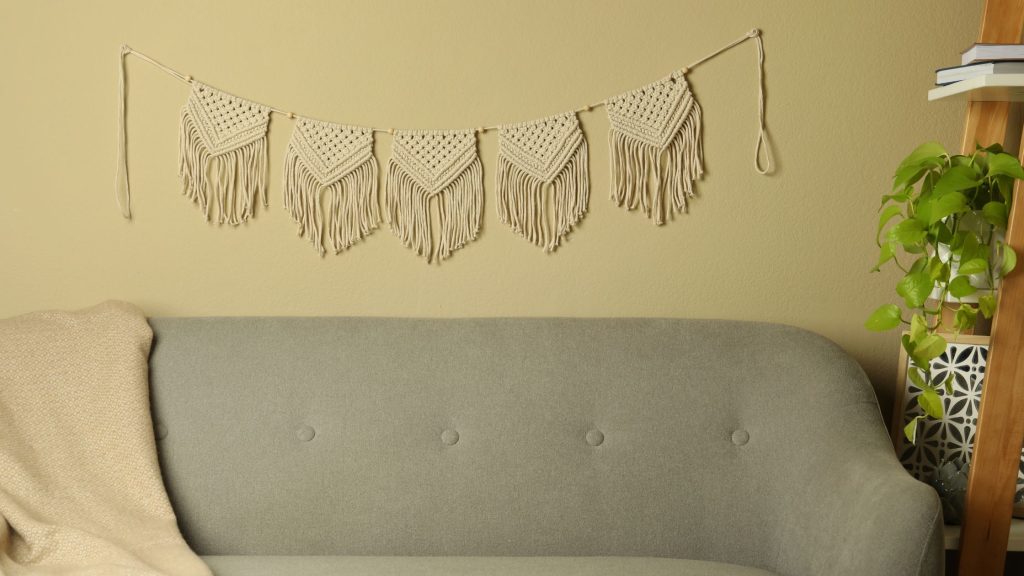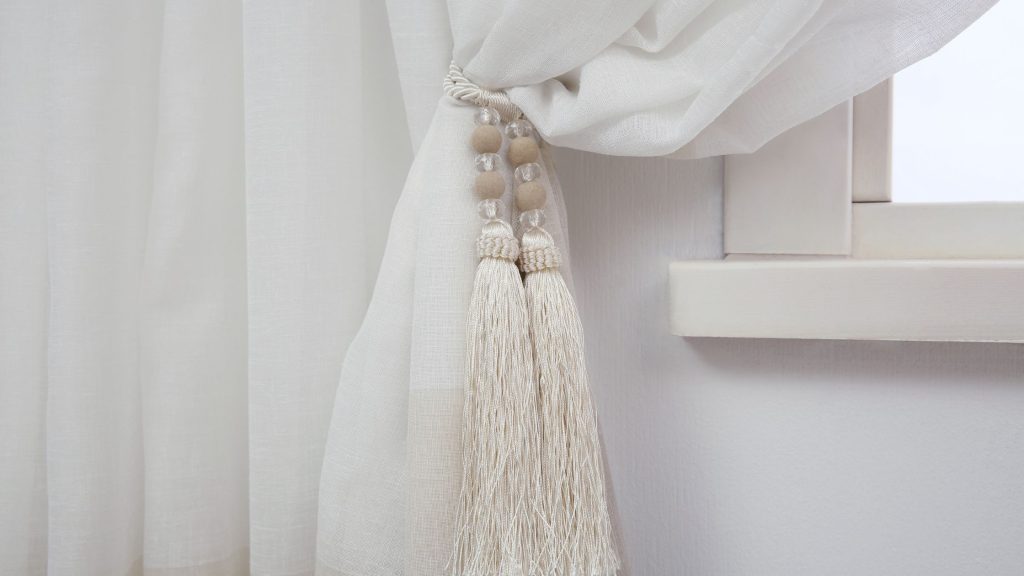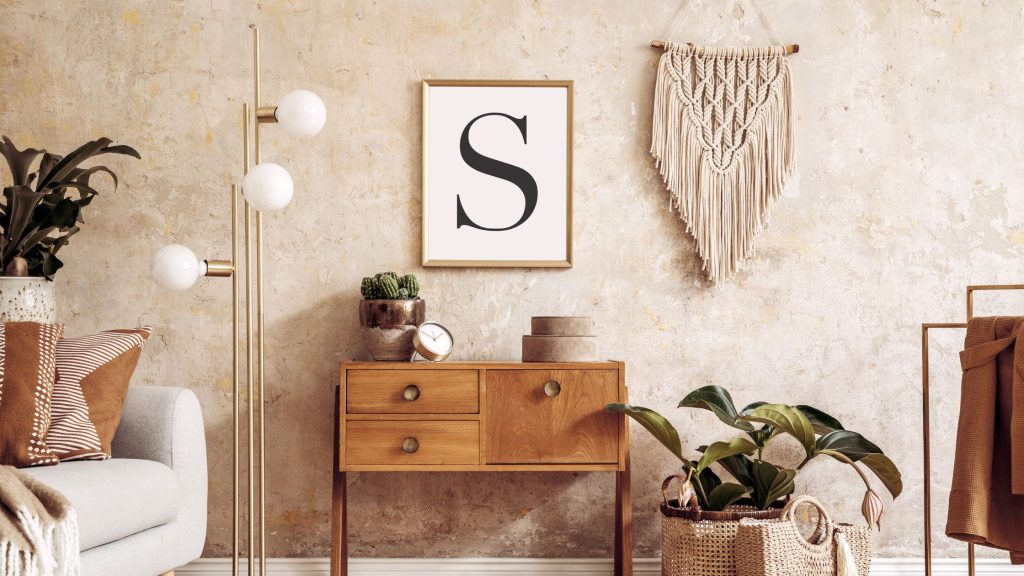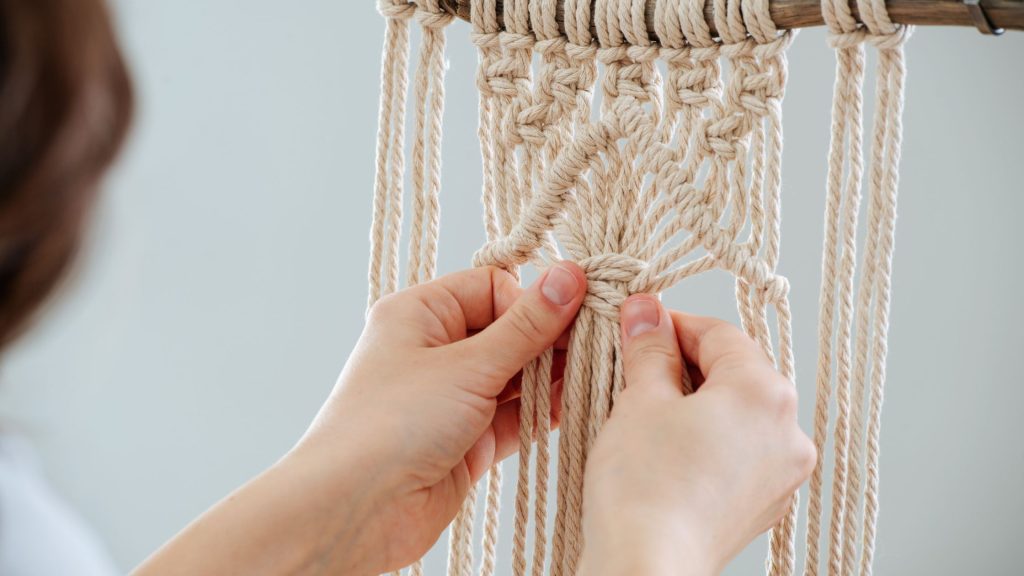So, you’ve got a room in your home that needs a little extra charm and personality, and you’ve heard that macrame patterns are the perfect way to achieve that. But where do you begin? Don’t worry, because we’ve got you covered. In this article, we’ll guide you step by step on how to make macrame patterns specifically tailored to your room decor. Whether it’s a boho-inspired bedroom or a cozy living room, you’ll learn how to create stunning macrame designs that will instantly elevate the ambiance of any space. Let’s get started on your creative journey!
Macrame Basics
Macrame is an ancient form of textile art that involves knotting and intertwining cords to create various decorative items. Whether you’re new to macrame or you have some experience, understanding the basics is essential for creating beautiful pieces that complement your room decor.
Understanding the art of macrame
Macrame dates back thousands of years and has been practiced by many cultures. It involves using various knots, such as the square knot, half hitch knot, and lark’s head knot, to create intricate patterns and designs. By learning these basic knots and techniques, you can create stunning macrame pieces that add texture and visual interest to your room.
Essential macrame tools and materials
To begin your macrame journey, you’ll need a few essential tools and materials. These include:
- Macrame cord: Choose a cord that suits your project and desired style. Common options include cotton, jute, or nylon cords.
- Scissors: A good pair of sharp scissors is essential for cutting and trimming cords.
- Macrame board or tapestry needle: These tools can help you keep your knots neat and even.
- Wooden dowel or metal ring: Depending on the project, you may need a dowel or ring to hang your macrame piece.
- Measuring tape or ruler: Accurate measurements are crucial in macrame to ensure your piece fits the intended space.
By having these tools and materials on hand, you’ll be well-prepared to embark on your macrame projects and create stunning room decor.
Choosing Patterns for Room Decor
When it comes to choosing macrame patterns for your room decor, there are a few factors to consider. By taking these factors into account, you can create pieces that seamlessly blend with your room’s style and theme.
Consider the room’s style and theme
The first step is to consider the overall style and theme of the room where the macrame piece will be displayed. Is it modern and minimalist? Bohemian and eclectic? Traditional and cozy? By understanding the room’s style, you can choose macrame patterns that complement and enhance the existing decor.
For example, if your room has a bohemian vibe with lots of natural elements, you might opt for a macrame wall hanging with earthy colors and intricate knotwork. On the other hand, if your room is more contemporary, a sleek and simple macrame plant hanger with a neutral color palette could be the perfect addition.
Identify the desired macrame pattern
Once you have an idea of the room’s style, you can start browsing macrame patterns that align with your vision. There are countless patterns available, ranging from beginner-friendly designs to complex creations.
Consider the size and shape of the space where you’ll be hanging or displaying the macrame piece. This will help you determine whether a large wall hanging, a small plant hanger, or a delicate table runner would be most suitable.
Select appropriate colors and materials
Color plays a vital role in room decor, and macrame is no exception. Choose colors that complement your existing color scheme or consider using contrasting colors to create a focal point. Earth tones, neutrals, and muted pastels are versatile choices that can work well with different room styles.
In addition to color, consider the material of the macrame cord. Cotton is a popular choice due to its softness and versatility. Jute and nylon cords can create a more rustic or modern look, respectively. Experiment with different materials to achieve the desired texture and visual effect.
By carefully selecting patterns, colors, and materials, you can customize your macrame pieces to perfectly suit your room decor.
Creating Wall Hangings
Wall hangings are a popular choice for adding a touch of elegance and texture to any room. Whether you want to create a statement piece or a subtle accent, macrame wall hangings offer endless possibilities.
Measure and prepare wall space
Before diving into the macrame process, it’s important to measure and prepare the wall space where you plan to hang the wall hanging. Consider the dimensions and layout, ensuring there is enough space for the piece to be showcased properly.
Clean and prepare the wall by removing any dirt or debris. Depending on the weight of the macrame wall hanging, you may need to use wall anchors or hooks for proper installation.
Choose wall hanging design
With the wall space prepared, it’s time to choose a design for your macrame wall hanging. Consider the size, shape, and complexity of the design based on the measurements and style of the room.
From geometric patterns to intricate knotwork, there are countless design options available. Take your time to find a design that resonates with you and complements the overall aesthetics of the room.
Create the macrame wall hanging
Once you’ve chosen a design, it’s time to bring it to life! Start by preparing the macrame cord and other materials needed for the project. Cut the cords to the desired length, keeping in mind any fringe or tassel details you may want to add.
Follow the instructions for your chosen pattern, using the basic macrame knots to create the desired design. Take your time, ensuring each knot is tight and secure. As you progress, step back and assess the piece to make any necessary adjustments.
Once the macrame portion is complete, trim any excess cord and add any finishing touches, such as fringes or beads. Attach the wall hanging to your chosen dowel or ring and hang it on the prepared wall space.
Creating a macrame wall hanging may take time and patience, but the end result will be a stunning piece of art that adds personality and style to your room.
Designing Plant Hangers
Macrame plant hangers are not only practical but also add a touch of greenery and charm to any space. Whether you have a green thumb or are just starting to explore indoor gardening, macrame plant hangers are a fantastic way to display your favorite plants.
Determine suitable plants and pots
First, consider the types of plants you want to showcase in your macrame plant hangers. Different plants have different needs, so make sure to select varieties that thrive in your specific indoor environment.
Once you’ve chosen your plants, consider the pots or containers that will complement the macrame hangers. Opt for pots with drainage holes to ensure proper water flow and avoid damaging the macrame cords.
Choose plant hanger style
There are various styles of macrame plant hangers to choose from, each offering a unique look and feel. From simple single-cord designs to intricate tiered hangers, the options are endless.
Consider the size and weight of your plant when choosing a style. Smaller plants may work well with minimalist, single-cord hangers, while larger plants might require more substantial designs with multiple cords for added support.
Make the macrame plant hanger
Once you’ve decided on the plant and hanger style, it’s time to create your macrame plant hanger.
Start by measuring and cutting the macrame cord to the desired length, keeping in mind the length needed for the hanging portion and any decorative details. Follow the chosen pattern, using the appropriate knots and techniques to create the hanger.
Ensure the hanger is sturdy and secure, especially if you plan on hanging heavier plants. Test the strength of the hanger before placing the plant in its designated spot.
Once the plant hanger is complete, carefully place the pot into the hanger, adjusting the cords as needed to ensure the pot is balanced and secure. Hang the hanger in a suitable location, allowing the plant to thrive and become a beautiful focal point in your room.
Crafting Curtain Tiebacks
Curtain tiebacks are a practical and stylish addition to any room with curtains. By creating macrame curtain tiebacks, you can add a touch of creativity and elegance to your window treatments.
Select suitable curtain style
Before diving into macrame curtain tiebacks, consider the style and fabric of your curtains. Different curtains require different tieback styles to create a cohesive look.
For example, if you have lightweight sheer curtains, delicate and intricate macrame tiebacks can complement their ethereal nature. On the other hand, if you have heavy drapes, thicker and sturdier macrame tiebacks can provide the necessary support and visual balance.
Choose tieback design
Macrame offers a wide range of designs and patterns for curtain tiebacks. Consider the overall aesthetics of the room and the curtain style when selecting a design.
From simple and minimalist to intricate and detailed, there is a macrame tieback design to suit every style. Consider incorporating decorative elements such as beads or fringes for added visual interest.
Construct the macrame curtain tiebacks
With the curtain style and tieback design chosen, it’s time to start crafting your macrame curtain tiebacks.
Measure and cut the macrame cord to the desired length, keeping in mind the amount needed for knotting and any decorative elements. Follow the instructions for your chosen pattern, using the suitable knots and techniques to create the tiebacks.
Ensure the tiebacks are secure and able to hold the curtains in place. Test their functionality before finalizing the project to ensure they provide the desired functionality and aesthetic appeal.
Attach the macrame tiebacks to the curtains, positioning them at the desired height and distance from the window. Stand back and admire the elegant touch your handmade tiebacks bring to your room decor.
Making Table Runners
Table runners are a versatile and practical addition to any dining or console table. By creating macrame table runners, you can elevate your table decor and bring a touch of bohemian charm to your room.
Measure and prepare tabletop
Before choosing a table runner pattern, measure your tabletop to determine the appropriate dimensions. Consider the length, width, and overhang you desire for the table runner.
Clean and prepare the tabletop, ensuring it is free from dust or debris that could interfere with the macrame process.
Select table runner pattern
Choosing a macrame table runner pattern largely depends on the size and shape of your tabletop. You want the table runner to fit comfortably and provide an aesthetically pleasing look.
Consider the overall style of your room and the table’s purpose when selecting a pattern. Whether you prefer a simple, symmetrical design or an intricate, asymmetrical pattern, there are options available to suit your taste.
Create the macrame table runner
Once you’ve chosen a pattern and gathered the necessary materials, it’s time to create your macrame table runner.
Measure and cut the macrame cord to the desired length, accounting for the table runner’s dimensions and any fringe or tassel details. Follow the instructions for your chosen pattern, using the appropriate knots and techniques to create the table runner.
Pay careful attention to tension and spacing to ensure the table runner maintains its shape and the knots are evenly aligned. Adjust the cord lengths as needed to accommodate any design elements and achieve the desired look.
Once the macrame portion is complete, trim any excess cord and add any finishing touches, such as fringes or beads. Place the table runner on the prepared tabletop, adjusting its position for optimal visual impact.
Enhance your table decor with a handmade macrame table runner, bringing a touch of elegance and warmth to your room.
Fashioning Room Dividers
Room dividers can be both functional and decorative, allowing you to create distinct spaces within a room. By fashioning a macrame room divider, you can add privacy, texture, and visual interest to your room.
Identify room divider requirements
Before designing a macrame room divider, consider its purpose and specifications. Do you need a full-height divider, or would a partial divider suffice? Determine the dimensions and layout based on the desired functionality and aesthetic appeal.
Think about the level of privacy and light filtration required in each section of the divided space. This will help you choose an appropriate macrame design and material.
Choose room divider style
Macrame room dividers come in various styles, from intricate patterns that create a sense of intimacy to open and airy designs that maintain a spacious feel. Consider the overall aesthetics of the room and the desired vibe when selecting a style.
Make sure the room divider complements the existing decor and color scheme. Neutral colors, earth tones, and natural materials often work well with macrame room dividers, creating a harmonious and organic look.
Craft the macrame room divider
Once you have a clear idea of the room divider requirements and style, you can begin crafting your macrame room divider.
Start by measuring and cutting the macrame cords to the desired length, accounting for the divider’s dimensions and any design elements. Follow the instructions for your chosen pattern, implementing the suitable knots and techniques.
Ensure the room divider is sturdy and durable, especially if it will be used frequently or in a high-traffic area. Consider reinforcing specific sections with additional knots or materials if necessary.
Once the macrame portion is complete, trim any excess cord and add any finishing touches, such as beadwork or unique patterns. Securely hang or mount the room divider according to the chosen installation method, creating a distinct and stylish separation within your space.
Constructing Pillow Covers
Pillow covers are an easy and affordable way to update the look of your pillows and add a personal touch to your room decor. By constructing macrame pillow covers, you can create unique and cozy accents that tie your room together.
Choose appropriate pillow size and shape
Before creating macrame pillow covers, determine the size and shape of the pillows you will be covering. Take accurate measurements to ensure a proper fit.
Consider the style and purpose of your pillows. Are they primarily for decorative purposes, or will they be used for lounging? The size and shape of the pillows will influence the design and macrame techniques used for the covers.
Design the macrame pillow cover
Macrame pillow covers can be designed in various ways, from simple knotwork to intricate weaves. Consider the overall aesthetics of your room and the desired level of texture when choosing a design.
Add decorative elements such as fringe, tassels, or unique patterns to personalize the pillow covers. Be mindful of color choices to ensure the covers blend seamlessly with your existing decor.
Sew or attach the cover to the pillow
Once you’ve created the macrame pillow cover, it’s time to attach or sew it onto the pillow. Depending on the design and your skills, you can use various methods to secure the cover to the pillow.
If you’re using an existing pillow, remove the pillowcase and carefully place the macrame cover over the pillow. Use hidden stitches or fabric adhesive to secure the cover in place, ensuring it fits snugly and remains securely attached.
Alternatively, if you’re creating the pillow from scratch, follow a sewing pattern or tutorial to construct the pillow with an opening for the macrame cover. Carefully insert the pillow into the cover and close the opening securely.
With the macrame pillow covers in place, step back and admire the cozy and unique accents they add to your room.
Adding Macrame Accents
In addition to the larger macrame pieces, adding smaller accents can further enhance your room decor. By incorporating macrame accents, you can introduce texture and visual interest in unexpected places.
Decide on accent pieces or decor
Consider the areas of your room that could benefit from a touch of macrame. It could be a lampshade, a picture frame, a mirror frame, or even a decorative basket. The possibilities are nearly endless!
Think about the purpose and functionality of the accent pieces as well. For example, a macrame lampshade can create beautiful light patterns and add ambiance to a room, while a macrame picture frame can provide a unique framing option for your cherished memories.
Select macrame patterns for accents
Choose macrame patterns that complement the specific accent piece you’re working with. Consider the size, shape, and purpose of the item, as well as the overall aesthetics of the room.
Some patterns may require adaptations or modifications to fit the dimensions of the accent piece. Feel free to get creative and experiment with different knotwork and techniques to achieve the desired result.
Create the desired macrame accents
When creating macrame accents, it’s important to pay attention to detail and craftsmanship. Take your time to ensure each knot is secure and aligned, especially when working with smaller items that require precision.
Follow the instructions for your chosen patterns, adapting them if needed to fit the accent piece. For lampshades, carefully attach the macrame cover or shade to the existing structure, ensuring it is properly secured.
For frames or other decorative items, attach the macrame design using glue or hidden stitches. Ensure the macrame accents are firmly attached and able to withstand everyday use.
With the macrame accents in place, step back and admire the unique touch they add to your room decor.
Customizing Lighting Fixtures
Lighting fixtures play a crucial role in room design, both in terms of functionality and ambiance. By customizing your lighting fixtures with macrame, you can elevate their visual appeal and create a warm and inviting atmosphere.
Identify suitable lighting fixtures
Before diving into macrame customization, consider the type of lighting fixtures you have or plan to use. Pendant lights, chandeliers, and lampshades are popular choices for macrame embellishments.
Ensure the selected fixtures are suitable for customization and can handle the additional weight and dimensions of the macrame cover or shade.
Design macrame covers or shades
Customizing lighting fixtures with macrame often involves creating covers or shades that fit over the existing structures. Design the macrame cover or shade based on the dimensions and style of the lighting fixture.
Consider the amount of light diffusion and the desired visual effect. Macrame can create beautiful patterns and shadows when strategically used with lighting fixtures.
Construct and attach macrame covers
Once you’ve designed the macrame cover or shade, it’s time to construct and attach it to the lighting fixture.
Start by measuring and cutting the macrame cord to the appropriate length, accounting for the dimensions of the fixture and any design elements. Follow the instructions for your chosen pattern, ensuring the knots and techniques align with the design.
Once the macrame portion is complete, carefully attach the cover or shade to the lighting fixture. Depending on the structure, you may need to use a combination of glue, hidden stitches, or clips to secure the macrame securely in place.
Test the lighting fixture to ensure the bulbs and wiring are not obstructed or affected by the macrame customization. Make any necessary adjustments and ensure everything is safely attached.
With the macrame covers or shades in place, turn on the lights and bask in the inviting glow and unique character they bring to your room.
Conclusion
In conclusion, macrame offers endless possibilities for creating stunning room decor. Whether you’re a beginner or have some experience, understanding the art of macrame and using the right tools and materials is key to creating beautiful pieces. By considering the room’s style and theme, choosing suitable patterns and colors, and following step-by-step instructions, you can create macrame wall hangings, plant hangers, curtain tiebacks, table runners, room dividers, pillow covers, accents, and customized lighting fixtures that elevate your room decor and reflect your unique personal style. So grab your macrame cord and tools, let your creativity flow, and enjoy the process of bringing handmade macrame beauty into your home.

